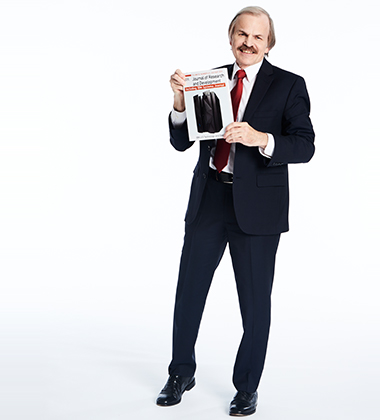Bill Kostenko
- Chief Engineer, Data Center and z Systems Hardware
- IBM Systems
- AAT Dutchess Community College
- MS Electrical Engineering, Rensselaer Polytechnic Institute
Living down the street from IBM in East Fishkill, New York, Bill earned engineering chops as a teenager, making mechanical drawings of aluminum die-casting dies for his father’s business and later repairing boneyard-relegated FM receivers at a 95 percent success rate. Now, he’s the chief hardware engineer for today’s modern big iron, z Systems, including the z13 mainframe.
In his own words

… on coming around to IBM
From middle school on, I grew up in Hopewell Junction, New York — right down the road from IBM’s chip manufacturing. In high school, we took field trips to see the facilities. Now, I loved math and science and knew I wanted to be an engineer. But the IBM engineers really dumbed down the technology [for us]. So, I wasn’t impressed at all!
Fast-forward a few years, to when I was an Electrical Engineering student at RPI, and IBM recruiters were asking my adviser if I would interview with them. I wasn’t sure about it, but he convinced me to talk to them, which led to two days of interviews in the New York area. That’s when I saw a lot of cool stuff like circuit design and circuit simulation, and met a lot of smart people — and thought, hey, I could actually work here.
One of my first jobs in Poughkeepsie was to work on reference oscillator and clock design for computers. As I branched out to working on memory, logic, and even into lasers and fiber optics, I actually got to go on what are called “crit-sits” or critical situations with clients. And, to this day, the most rewarding part of this job is working with clients. Even in a problem situation, you can develop a good, professional relationship with your client. And you always get a thank you.
… on keeping big iron relevant in today’s era of big data, smart machines
First, we had to, what might seem like, bend the conservation of energy law of physics to get the z13 to deliver more than 40 percent more capacity than its predecessor. And because I had committed to our clients in 2008 that the z would remain at the same power level, generation to generation, the z13’s energy consumption had to match not last year’s z, but the z10.
This meant that, compared to the zEC12, the z13 had to deliver 40 percent more processors and more than three times as much memory, while staying at the same power levels. So, the energy savings came from better monitoring and control of the logic design; from more efficient power conversion and distribution; and from a more efficient and intelligent cooling within the system.
All of this matters because of what the z13 is being asked to do. As IBM transforms itself into a cloud platform and cognitive solutions business, infrastructure — the z — is a critical part of that. The z is already a critical part of government, financial and commercial infrastructure. Now, z is the base of IBM’s enterprise hybrid cloud, which is evolving to be the landing place for where these clients want to put their applications, taking advantage of the external cloud, as well as cognitive solutions.
… on a breakthrough that hasn’t happened … yet
The breakthrough that hasn’t happened, but that I expected to happen — and isn’t in a totally unrelated field to what I do today — is nuclear fusion for energy generation. This subject was my Master’s thesis: I did the instrumentation and controls for an ion beam probe that looked at a plasma within a tokamak.
The tokamak is this donut-shape magnetically confined plasma that’s currently being used to develop nuclear fusion in a reactor called ITER (“The Way” in Latin) at Cadarache in France. But the progress has been so slow that I have a feeling that other technologies — in terms of energy from solar, wind, and other renewables — are where things are going. So, I’m a little disappointed that fusion hasn’t taken off, but it is still being worked on.
… on what he’s reading, today
Right now, I’m reading The Vital Question by Nick Lane. It’s about energy evolution, and the origin of complex life. That may sound like it’s a pretty far walk from the sort of things I do at work, but the book goes into the flow of energy in life, as far as redox reactions, and chemiosmosis, and proton gradients. And this actually has applications. We have researchers in Zurich who are working on 5D computing that uses what they’re calling electronic blood. And it’s going through some of the same kinds of reactions that living things do for energy.
… on the best advice he’s ever received
My thesis adviser at RPI, Bill Jennings, always told me to have fun.
